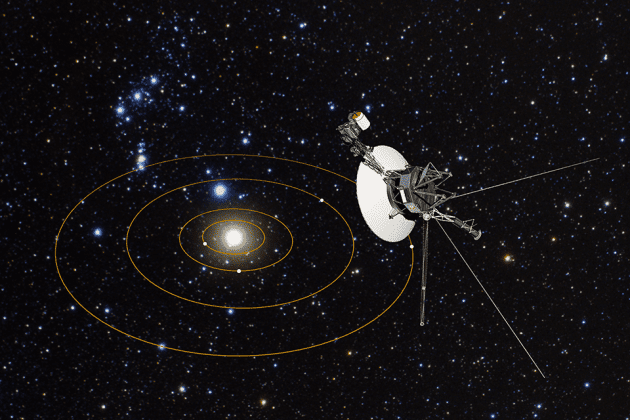As Voyager continues to go where no other mission has gone before, it receives a bit of help from the Hubble Telescope.

Voyager 1 has entered interstellar space. The NASA spacecraft, which left Earth on a September morning 36 years ago, has traveled farther than anyone, or anything, in history. As it prepares to sail even deeper into the unknown, the shuttle is getting a bit of help from the Hubble Telescope, detailing what lies in front of it – particularly rich clouds of hydrogen.
“If the Voyager spacecraft are the Google Street View car going around your neighbourhood taking pictures on the street, then Hubble is providing the overview, the road map for the Voyagers on their trip through interstellar space,” says Julia Zachary, an undergraduate student at Wesleyan University in Middletown, Connecticut.
It’s a rare marriage between two emblematic missions, two landmark projects which have marked space exploration. There are two Voyager missions, both of which launched in 1977 on a mission to visit and study the gas giants in our solar system: Saturn, Jupiter, Uranus, and Neptune. After that, however, they are set to continue their mission outside the solar system, drifting away into the cold, vast space. Voyager 1 is already in interstellar space, revealing some rather surprising information about the edge of our solar system. Meanwhile, Voyager 2 is still just barely within the Solar System but still more than 17 billion kilometers away from Earth.
The thing is, the two missions will be leaving the solar system at slightly different angles, and Hubble is peering ahead of both their trajectories. Although the Google Street View analogy is quite neat, this is no ordinary map Hubble is developing. The telescope analyzes light coming from distant stars and analyzes chemical signatures trapped in that light. Most notably, it picked up signatures from some hydrogen clouds contain small amounts of carbon, which Voyager 1 is heading towards. As Voyager reaches those parts of space, it sends back information which will be analyzed and compared with what Hubble found. It’s almost unique in astronomy, to take some indirect measurements (Hubble) and then have direct, on-point information (from Voyager).
“As an astronomer, I’m not used to having measurements from the place I’m observing,” says Seth Redfield, an astronomer at Wesleyan and a member of the team.
The Voyager missions also feature phonograph recordings on a 12-inch gold-plated copper disk, containing sounds and images selected to portray the diversity of life and culture on Earth.


